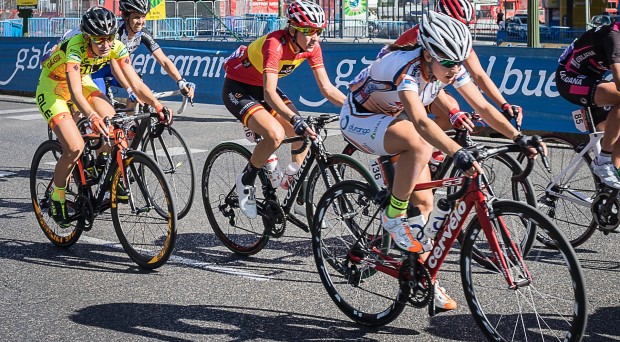
Why do we ban some drug-use in sport, but permit the use of other drugs? The whole drugs-in-sport issue becomes increasingly messy when we work through the mixed-message circulating within our communities about when it may be appropriate or inappropriate to use drugs.
On one hand, sport officials state that athletes will be punished for taking drugs, even where the purpose is to help them manage the pressures and stresses of their sporting lives. On the other hand, health care professionals will encourage ordinary people to do the same thing because it will improve the quality of their lives, and get them through the day with a minimum of pain and anxiety.
The confusion is compounded when it is suggested that whereas the use of over-the-counter drugs with significant side effects is acceptable, the use of an illicit drug with no greater side effect is not only taboo, but also indicative of a fatal moral failing.
The message can be further mangled when officials, journalists and fans not only demand that players always perform at their best, but also remind them that the only thing more despicable than drug use to enhance performance is “tanking”, playing dead, or in one way or another playing below the expected level of performance. In other words, it is heinous to play both too well, and not well enough.
The other mixed message is to suggest that while anything that undermines the quality of job performance in the workplace (like coming to work drunk) should be regulated, it is not appropriate for players and athletes to use a substance (like an anabolic steroid, or indeed a strong anti-asthma inhalant) that might actually improve or sustain their on-field (i.e. work place) performance.
Then of course there is the confusing custom that sees drugs like cannabis and ecstasy demonized, but other drugs like alcohol and tobacco treated as benign at worst, and socially attractive at best, even though alcohol and tobacco cause far more individual and social hardship.
Is there an alternative to current zero tolerance approaches?
Sport organizations are faced with significant challenges when working through anti-doping policy options. But it is also important to recognize that there is a smorgasbord of policy options from which to select the most suitable for a specific event or game situation.
One option is to acknowledge the problem and hope it goes away. This solution is sensible in so far as it accepts the endemic nature of drug use in sport, and concedes that, like attempts to prohibit the use of alcohol,draconian rules and sanctions may even send it further underground. But, a head-in-the-sand approach is also irresponsible since unregulated drug use can produce serious health problems.
A second option is to introduce an even more restrictive raft of coercive deterrents that demonstrate an unflinching ‘tough on drugs’ policy. This involves year-round saturation testing for both performance enhancing and illicit drug use combined with heavy punishments for any positive test or use.
It may even include a jail sentence, which is being considered in Germany at the moment. The logical extension of this WADA-styled approach would also require a far tougher stance on other substances that could undermine the moral fabric of sport, such as alcohol, pain-killers, caffeine and tobacco.

The idea that drug use in sport should be criminalized is attractive to officials and politicians who believe that first, players are fundamentally constrained by threats and punishments, and second, drug-free sport is worth striving for, no matter what the financial or social costs.
A third option is education and counseling. This strategy is underpinned by the humanistic assumption that players and athletes are able to make good decisions about their long term welfare once they have access to all the appropriate information about the rewards and risks of taking drugs.
But this assumption is also naïve in the sense that it fails to accommodate the addiction many athletes have to winning and success, and the risks they are prepared to incur to get to the top of the sporting-tree.
At the same time, it has the advantage of treating players and athletes in an adult way, and seeks solutions that not only reflects their views about what it takes to become an elite player and athlete, but also focuses on minimizing the harms associated with drug use and abuse.
The costs of controlling drug use
Notwithstanding the strongly held views that characterize the drugs in sport debate, there are many factors that make drug management in sport a vexing problem. There is no simple solution, and the fact that what is reasonable and appropriate drug use in a work, social or general health and medical setting, may not be appropriate in a sport related situation, further complicates the issue.
Neither is it obvious that the drug-use problem can be cleared up with more targeted investigations, more frequent testing for even more drugs, and more punitive fines and bans. Nor is there strong evidence that drug-free sport will make the playing field any more level, where everyone has a better chance of succeeding.
Moreover not all drugs are treated equally under the current arrangements. Some are demonized, while others are romanticized, even where their health risks are similar. This only muddies the drugs-in-sport policy-making waters, and does little to assist the development of fair and consistent rules.
Finally, drug management is a costly exercise, and increases exponentially when it is decided to test all year round for both performance enhancing and illicit drugs. Drug-use investigations are also costly to run, and, as the Essendon Football club saga shows, putting millions of dollars into long and intensive investigations is no guarantee of achieving a positive result.
In short, it has to be said that from a drugs-in-sport policy perspective, these are very turbulent and challenging times indeed.
Comments